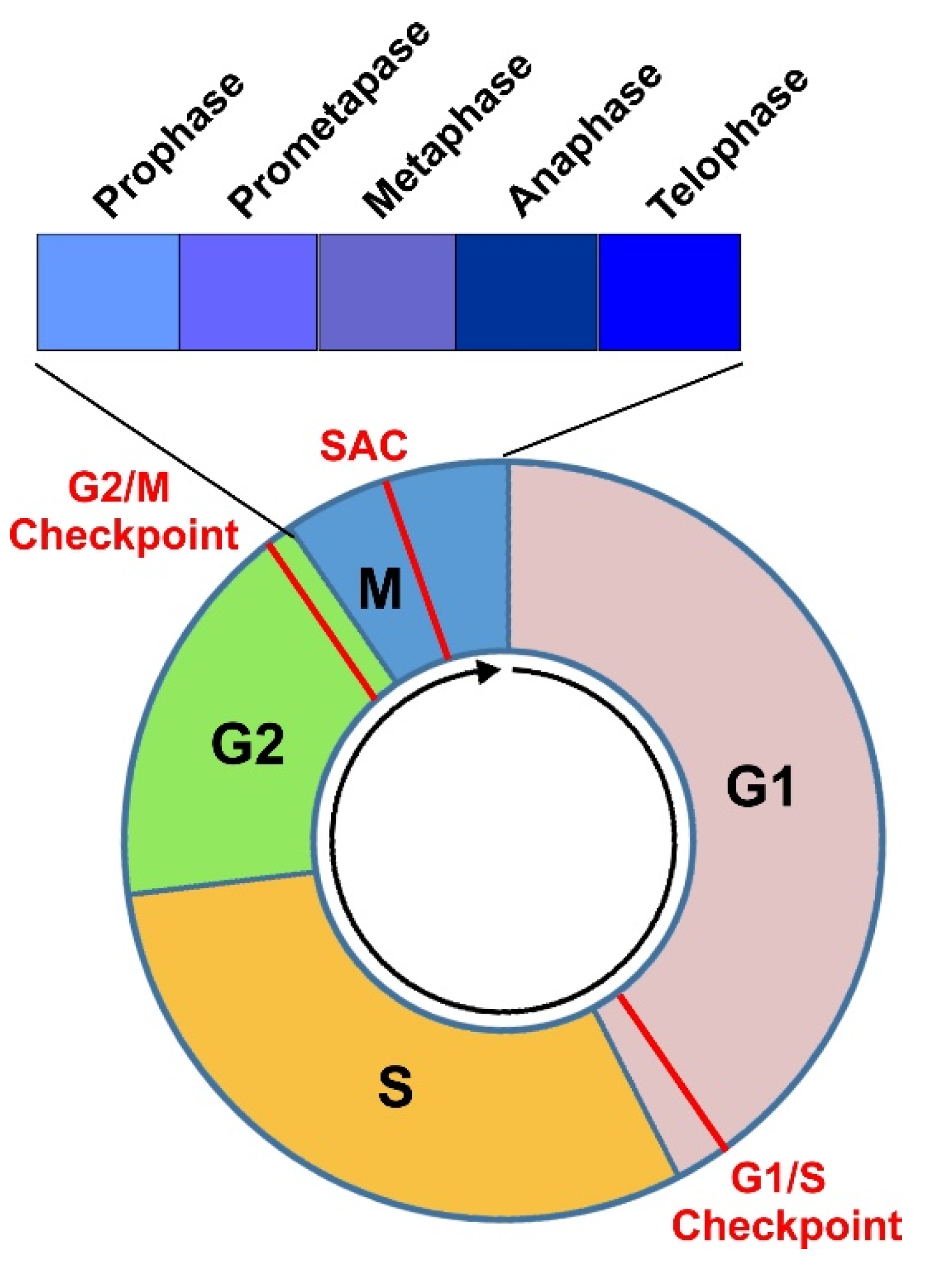The Cell Cycle The Biology Primer Biology Diagrams The G1 phase, or Gap 1 phase, is the first stage of interphase in the cell cycle. It is a period of cell growth, metabolic activity, and preparation for DNA synthesis. they perform their regular functions. This phase can be temporary or permanent. Temporary G0 allows cells to re-enter the cycle under appropriate conditions, while permanent Mitosis in an animal cell (phases ordered counter-clockwise), with G 1 labeled at left.. The G 1 phase, gap 1 phase, or growth 1 phase, is the first of four phases of the cell cycle that takes place in eukaryotic cell division. In this part of interphase, the cell synthesizes mRNA and proteins in preparation for subsequent steps leading to mitosis. G 1 phase ends when the cell moves into the S The G1 phase is divided into two intervals based on a cell's dependence on mitogen signals for sustained cell cycle progression (Fig. 2A).In early G1, proliferation-competent cells require mitogenic signals to keep progressing through the cell cycle. Once a cell progresses past the restriction point (R) and into late G1, it is no longer dependent on mitogens and is intrinsically committed to

The cell cycle consists of a timed sequence of events that occur during interphase and mitosis (M). Interphase is made up of the G 1 (G = gap) phase, the S (synthesis) phase, and the G 2 phase (Fig. 15-2).Both G phases contain checkpoints that govern whether the cell moves into DNA replication (G 1 checkpoint) or into mitosis (G 2 checkpoint).. The G 1 and G 2 phases involve the synthesis of Interphase steps are the first gap phase (G 1), the synthesis phase (S), and the second gap phase (G 2). Cells divide during mitosis (M). The final step of mitosis, or the following step (depending on your source) is cytokinesis. Cytokinesis is the division of the cell's cytoplasm, which forms two new cells. Some cells exit the cycle and

Cell Cycle G1 Phase - an overview Biology Diagrams
M phase. Mitosis followed by cytokinesis (cell separation) Formation of two identical daughter cells; G0 phase. While some cells are constantly dividing, others are quiescent. These cells exit G1 and enter a resting state called G0. In G0, a cell is performing its function without actively preparing to divide.

Main Functions of G1 Phase. The G1 phase is often referred to as the growth phase, because this is the time in which a cell grows. During this phase, the cell synthesizes various enzymes and nutrients that are needed later on for DNA replication and cell division.The duration of the G1 phase is variable and it often depends on the nutrients that are available to a cell.

TeachMePhysiology Biology Diagrams
Most of these cells are capable of re-entering the cell cycle at the G1 phase should the need ever arise. Nerve cells do not normally regenerate; they remain in stasis. During the G1 phase, cells accomplish most of their growth. They get bigger in size and make proteins and organelles needed for normal functions of DNA synthesis.
